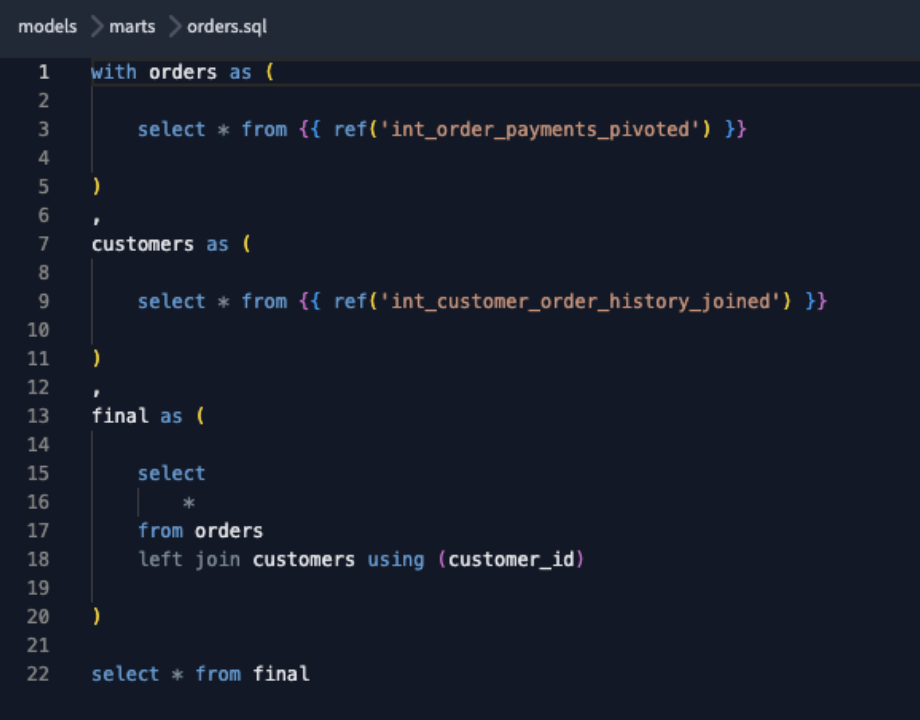As technology continues to advance, the data landscape is undergoing significant transformation. Especially in the cloud, the traditional ETL (Extract, Transform, Load) approach is giving way to the more agile ELT (Extract, Load, Transform) paradigm, which pushes the T toward the end of the pipeline, loading raw data directly into the warehouse and executing transformations as the last step (meaning: skip the reload after modification).
New challenges ask for new solutions, and DBT has emerged as a front-runner. Tailor-made for the ELT approach, DBT is revolutionizing how data teams operate. In this article, we want to introduce you to this tool, talk about its technical prowess, and share a success story that underscores its transformative potential.
What is DBT exactly?
DBT is not just another tool in the data world; it is an open-source powerhouse designed to democratize data transformation. At its core, DBT is SQL-based, making it accessible and intuitive for a diverse range of professionals, from data analysts to seasoned engineers. Leading with an ELT-first mindset, DBT executes transformations right within the data warehouse, leveraging the computational power of modern cloud data platforms which provide massive scalability and on-demand resources, ensuring both efficiency and speed.
How does it work?
At the heart of DBT’s operation are “models,” which are essentially SELECT statements (from SQL!) that define data transformations. Once a model is defined, DBT works its magic by translating everything into pure SQL scripts. It then constructs a Directed Acyclic Graph (DAG) to determine the sequence in which each script should be executed.
Depending on the data engine you’re using, be it Redshift, Snowflake, or Big Query, DBT automatically optimizes SQL expressions to ensure peak performance.

Notable technical features
SQL-Driven Design: DBT’s primary strength lies in this approach. This design choice ensures that data professionals, regardless of their background, can easily adapt and utilize the tool without the steep learning curve of a programming language.
Data Lineage Visualization: DBT empowers teams to map out the entire lifecycle of their data, no more mysteries and no more queries around just to know how data traversed along your organization. This greatly boosts transparency and trust.
SCD2 Support: DBT supports Slowly Changing Dimension type 2 (SCD2) out of the box. This means you can easily track historical changes in your data, which is crucial for many analytical use cases.
Versatile Integration Capabilities: DBT seamlessly integrates with major cloud platforms like AWS’s Redshift, Google’s BigQuery, and Snowflake, as well as orchestration tools such as Airflow or Dagster.
Honorable Mentions: DBT also boasts integrated testing to ensure data quality, auto-generates (nice) documentations, and offers extensibility with customizable macros.

A success story
Our experience with a leading healthcare client perfectly exemplifies the power of DBT in unifying diverse data teams. Facing challenges with their data pipeline spanning Apache Airflow, Azure Data Factory, Databricks Unity Catalog, and PowerBI, they sought a solution that would streamline processes and enhance collaboration.
With our assistance, hundreds of tables were transformed, and hundreds of models were seamlessly integrated using DBT in their ecosystem. The results are multifaceted:
- Seamless Workflow: Data transformations, once a bottleneck, became streamlined. Engineers set up the data structures, while analysts directly wrote DBT models to shape the data for insights, all within the same tool.
- Transparency: The power of data lineage visualization combined with auto-generated documentation bolstered trust in data sources and transformations throughout the enterprise.
- Enhanced Collaboration: With a shared language (SQL) and platform (DBT), teams communicated more effectively, aligning on business goals and data requirements.
Conclusion
Like any tool, DBT is not without its challenges. It requires a learning curve and might not fit every use case perfectly. However, the benefits it offers are undeniable. Approach your DBT journey with an open mind, ready to grab its strengths, and unlock the transformative power it can bring to your data ecosystem!
